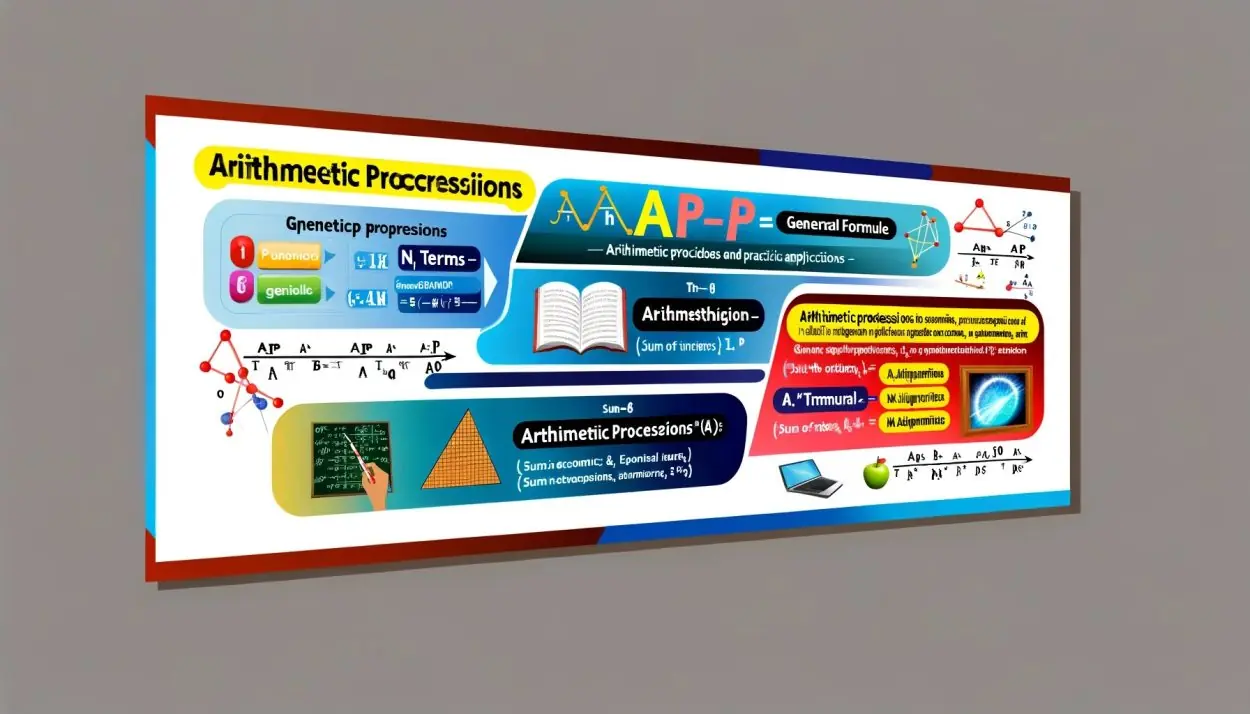
NCERT Class 10 Maths: Comprehensive Guide to Arithmetic Progressions

Understanding Arithmetic Progressions (AP) for Class 10th Maths NCERT
Arithmetic Progressions (AP) are a fundamental concept in mathematics, particularly within the Class 10th NCERT syllabus. An AP is a sequence of numbers in which each term after the first is obtained by adding a constant, known as the common difference, to the preceding term. This article delves into the introduction, general form, calculation of the sum of (n) terms, and practical applications of AP.
Introduction to Arithmetic Progression
An Arithmetic Progression is a sequence where the difference between any two consecutive terms is always the same. This constant difference is what defines the progression and is denoted by (d). If (a) represents the first term of the sequence, then the AP can be represented as (a, a + d, a + 2d, a + 3d, \ldots)
General Form of an AP
The (n)th term of an AP can be calculated using the formula:
[a_n = a + (n-1)d]
where:
- (a_n) is the (n)th term of the AP,
- (a) is the first term, and
- (d) is the common difference.
This formula helps in finding any term of the sequence without having to list all preceding terms.
Sum of n Terms of an AP
The sum of the first (n) terms of an AP is a critical concept and can be found using the formula:
[S_n = \frac{n}{2}[2a + (n-1)d]]
Alternatively, it can also be calculated as:
[S_n = \frac{n}{2}(a + l)]
where (l) represents the last term of the AP.
These formulas are incredibly useful in solving problems involving large sequences where calculating the sum manually would be impractical.
Practical Applications of AP
1. Economics and Business
In business, understanding AP helps in calculating the total cost of goods if they are purchased in a sequence where the cost increases by a fixed amount with each purchase. Similarly, it can help in understanding revenue over periods if it increases by a set amount each period.
2. Construction and Architecture
AP finds its application in construction, particularly in designing structures with repeating patterns that increase or decrease at a constant rate, such as staircases, pillars, or pyramids.
3. Natural Phenomena
Many natural phenomena follow patterns that can be represented by AP. For instance, the pattern of petals in flowers or the arrangement of seeds in fruits often follows a sequence that can be analyzed using AP.
4. Sports
In sports, strategies for improving performance over time can be planned using AP. For example, if an athlete plans to increase their training intensity or duration by a constant amount each week, they are essentially following an AP.
Problem-Solving with AP
Solving problems involving AP requires a clear understanding of its properties and formulas. Whether calculating the nth term, the sum of n terms, or applying the concept to real-life scenarios, a systematic approach is essential.
Example Problem
If the first term of an AP is 5 and the common difference is 3, find the sum of its first 10 terms.
Solution:
Given: (a = 5), (d = 3), (n = 10)
Using the sum formula:
[S_n = \frac{n}{2}[2a + (n-1)d]]
[S_{10} = \frac{10}{2}[2(5) + (10-1)3]]
[S_{10} = 5[10 + 27]]
[S_{10} = 5 \times 37 = 185]
Therefore, the sum of the first 10 terms of this AP is 185.
Conclusion
Arithmetic Progressions play a crucial role in mathematics and its applications across various fields. Mastery of AP not only aids in academic excellence but also enhances logical thinking and problem-solving skills, which are invaluable in everyday life and professional scenarios. Through consistent practice and application of concepts, students can gain a deep understanding of AP and its significance.